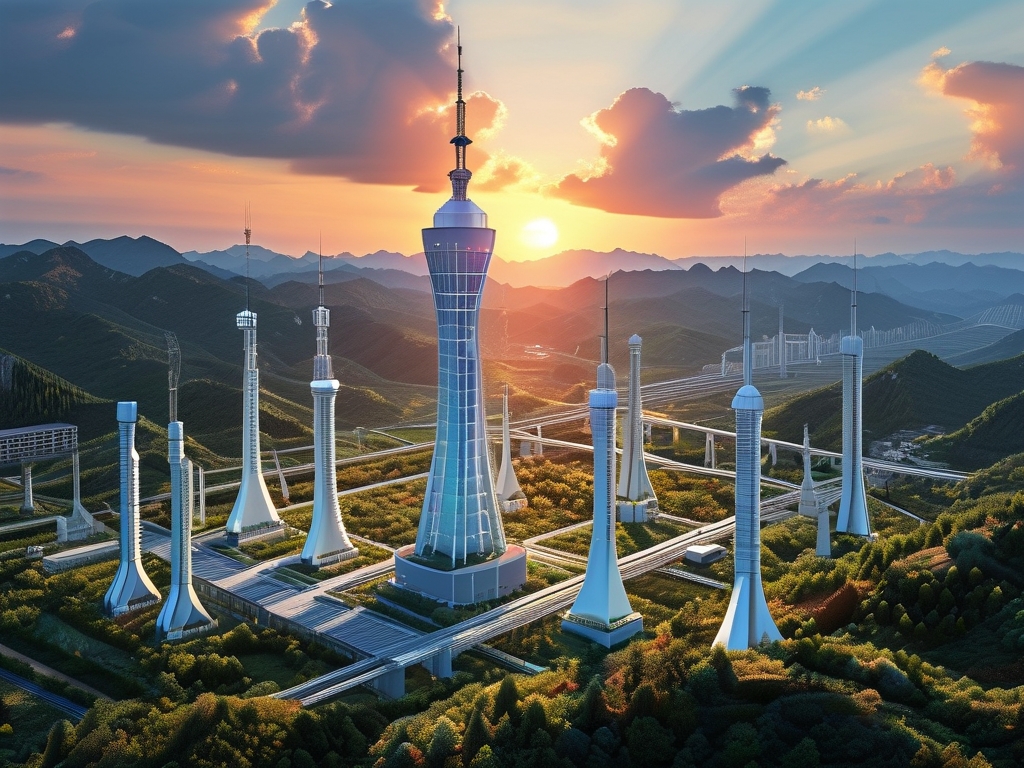In the rapidly evolving landscape of telecommunications, China Tower Corporation Limited—the world’s largest provider of communication infrastructure—has emerged as a pivotal player in supporting 5G networks, IoT connectivity, and smart city initiatives. At the heart of its technological advancements lies the work of image algorithm engineers, whose expertise in artificial intelligence (AI) and computer vision is reshaping how telecom infrastructure is monitored, maintained, and optimized. This article explores the critical responsibilities, challenges, and future trends associated with this specialized role.

The Intersection of Telecom and AI
China Tower manages over 2 million telecom towers across China, each requiring constant monitoring for structural integrity, environmental safety, and operational efficiency. Traditionally, this involved manual inspections, which were time-consuming, costly, and prone to human error. Enter image algorithm engineers: professionals who develop AI-driven solutions to automate and enhance these processes. By leveraging technologies like convolutional neural networks (CNNs), object detection models, and semantic segmentation, they enable systems to analyze thousands of images from drones, CCTV cameras, or satellite data in real time. For example, algorithms can detect rust on tower surfaces, identify vegetation encroachment, or flag unauthorized construction near sites—all with minimal human intervention.
Key Responsibilities of Image Algorithm Engineers
- Algorithm Development: Engineers design and train models tailored to telecom-specific challenges. This includes creating datasets of tower images under diverse conditions (e.g., varying weather, lighting, or angles) and fine-tuning models for accuracy.
- Edge Computing Integration: To reduce latency, engineers deploy lightweight algorithms on edge devices installed at tower sites. This ensures rapid decision-making without relying on cloud servers.
- Collaboration with Cross-Functional Teams: They work closely with field technicians, data scientists, and network planners to align AI solutions with operational needs. For instance, predictive maintenance algorithms might integrate with asset management systems to prioritize repairs.
- Ethical and Regulatory Compliance: Ensuring algorithms adhere to privacy laws (e.g., blurring sensitive details in public area images) and environmental regulations is another critical task.
Technical Challenges and Innovations
Despite their transformative potential, image algorithm engineers at China Tower face unique hurdles:
- Data Diversity: Towers are located in urban, rural, and remote areas, requiring models to generalize across vastly different environments. Engineers often use data augmentation techniques or synthetic data generation to address this.
- Real-Time Processing: High-resolution images from drones demand efficient algorithms to avoid bottlenecks. Solutions like model quantization and hardware acceleration (e.g., GPUs at edge nodes) are commonly employed.
- Scalability: As China Tower expands its 5G rollout, engineers must ensure algorithms scale across millions of sites. Federated learning—a decentralized AI training approach—is being explored to maintain performance without centralizing vast datasets.
A notable innovation is the use of generative adversarial networks (GANs) to simulate rare but critical scenarios, such as extreme weather damage. By training models on these synthetic images, systems become more robust to real-world anomalies.
Impact on Industry and Society
The work of image algorithm engineers extends beyond technical milestones. By reducing inspection costs by up to 40% and cutting response times for emergencies, their contributions enhance network reliability—a cornerstone of China’s digital economy. For rural areas, where towers are often harder to access, AI-driven monitoring ensures equitable service quality. Moreover, their efforts support sustainability goals; for example, algorithms optimizing energy use across towers have reportedly lowered carbon emissions by 15% in pilot regions.
Future Trends and Skills Demand
Looking ahead, the role will evolve alongside emerging technologies:
- 5G and Beyond: Higher-frequency 5G bands require denser tower networks, increasing the demand for automated inspection systems.
- Digital Twins: Engineers may build virtual replicas of towers, enabling real-time AI analysis and predictive simulations.
- Autonomous Drones: Fully automated drone fleets for inspections could become mainstream, guided by AI navigation and fault-detection algorithms.
To thrive in this field, professionals will need expertise in multimodal AI (combining visual, thermal, and LiDAR data) and familiarity with telecom standards. Soft skills like problem-solving and cross-disciplinary communication are equally vital.
Image algorithm engineers at China Tower exemplify the fusion of cutting-edge AI and mission-critical infrastructure. Their work not only drives operational efficiency but also underpins the connectivity that powers modern life. As telecom networks grow in complexity, their role will remain indispensable—a testament to the transformative power of AI in shaping the future of technology.

